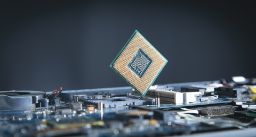The world of deepfake advertising is coming this decade

Deepfake video of Facebook CEO Mark Zuckerberg was circulated in 2019, drawing attention to the potential of the technology. Image credit: Flickr
In summary
- The world of deepfake advertising is coming in the next decade
- The technology will allow marketers to personalise ads to every single consumer
- Deepfakes could be intentionally, obviously fake to protect brands from reputational damage
Manipulated advertising is becoming an increasingly prevalent phenomenon in marketing. Techniques such as deepfakes leverage AI and machine learning to generate convincing, true-to-life, synthetic replicas that are nearly impossible for consumers to detect.
New Swinburne research reveals how deepfakes are likely to be used by companies and marketers in Preparing for an Era of Deepfakes and AI-Generated Ads: A Framework for Understanding Responses to Manipulated Advertising.
What’s clear is that the world of deepfake advertising is coming. Researcher and co-writer of the paper, Professor Sean Sands, says, “It’s likely that deepfakes will be widely used in mainstream media within a decade.”
Deepfakes are already here – just not widespread
To date, content produced by synthetic methods is mostly user-generated, often by technologists showcasing their AI prowess by training AI to swap faces or voices of very different actors or politicians. Much of this user generated content is obviously fake. The producers’ intentions are less likely to fool, mislead or trick audiences, but to create humour and demonstrate the potential capabilities of this emerging technology.
Advertisers will be capable of producing deepfakes indistinguishable from the real thing – including deepfakes of ourselves in advertising – although experts say there will be benefits to steer away from being too real or accurate.
Will the future of deepfakes scare or excite people?
Researcher in digital innovations in marketing and advertising, Associate Professor Colin Campbell says brands could personalise ads to every single consumer, at a scale never seen before.
“Imagine ads that skip the model entirely and show you wearing the clothes – something similar to the futuristic ads in the 2002 film, Minority Report,” he says.
“It’s a concept that may prove too intimidating for many consumers. There is an abundance of research that shows greater positive effects when consumers see people like them in ads. Brands could tailor ads by serving up a deepfake model matching your exact ethnicity, height, wearing clothes similar to what you’ve purchased previously or liked online, standing on a street near your home or workplace using data extracted from social media, retail sensors or loyalty programs.”
The research shows that these personalised ads could lead to more sales and improved reputation for brands, so long as they don’t cross over into hyper customer surveillance – leading to privacy concerns and feelings of vulnerability from consumers.
Deepfakes might look internationally, well… fake
Researcher in innovations in retail and social media, Professor Sands, points out that just because we can make deepfakes indistinguishable from the real thing, doesn’t mean we will when it comes to advertising.
“Marketers will strive to create ‘authentically human’ deepfakes to seem ‘real’. But we also have research that suggests consumers can be more forgiving of obviously virtual influencers. Some businesses may strive to make the fact a deepfake is fake known, so their consumers may be more forgiving of their transgressions.”
-
Media Enquiries
Related articles
-

- Science
If quantum computing is answering unknowable questions, how do we know they’re right?
A new Swinburne study is tackling the paradox - if quantum computing is answering unknowable questions, how do we know they’re right?
Tuesday 16 September 2025 -

- Technology
World first study of young adults’ brain activity shows TV and gaming boosts focus, while social media hinders it
A world-first Swinburne-led study into young adults’ brain activity has found that TV and gaming are associated with increased focus, while social media is associated with decreased focus.
Thursday 07 August 2025 -

- Science
How to make metals from Martian dirt
Swinburne and CSIRO researchers have successfully made iron under Mars-like conditions. This is how they did it.
Tuesday 26 August 2025 -

- Technology
- Science
Five surprising ways quantum is changing the world in areas you wouldn’t expect
As the world celebrates the Year of Quantum, here’s five unexpected ways quantum will change the way we operate, explained by Swinburne experts.
Thursday 07 August 2025 -

- Technology
New research finds Instagram promotes white appearances, cultural appropriation and plastic surgery via filters
New research finds Instagram filters promote white beauty standards, selective cultural appropriation and allow users to ‘try on’ risky surgical procedures.
Thursday 24 July 2025

